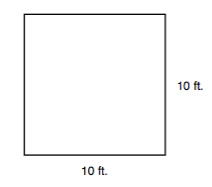Bulletin #2287, Know Your Soil: Applying Fertilizers on Your Home Gardens
Originally prepared by Tim Griffin, Extension Sustainable Agriculture Specialist, University of Maine Cooperative Extension.
Reviewed and updated by Richard J. Brzozowski, Food System Program Administrator University of Maine Cooperative Extension.
For information about UMaine Extension programs and resources, visit extension.umaine.edu.
Find more of our publications and books at extension.umaine.edu/publications/.
Plants in farm fields and home gardens often need fertilizers to supplement nutrients that exist naturally in the soil. Fertilizer application at the right amount can be difficult for people with small home gardens or lawns. Often, the nutrients in the purchased fertilizer may not match the soil test recommendation. You can be sure to get the right amounts if you know a little about nutrients and fertilizers.
Changing Fertilizer Grades
Fertilizer grades show the percentage of nitrogen (nutrients), phosphate (P2O5) and potash (K2O) in the mixture. These percentages are listed in the order of N – P2O5 – K2O written as (N-P-K) on the fertilizer bag. For example, an 80-pound bag of 5-10-15 fertilizer contains:
4 pounds nitrogen (80 pounds x 5 percent)
8 pounds phosphate (80 pounds x 10 percent)
12 pounds potash (80 pounds x 15 percent)
It is common for nitrogen to be the nutrient that most limits plant growth. However, applying too much nitrogen can damage seeds and seedlings. You can use the percentage of nitrogen in a fertilizer (the first number in the grade) to decide how much you apply.
Let’s say your soil test includes a recommendation for the number of pounds of nitrogen fertilizer per 1,000 square feet, for a specific grade of fertilizer, for example, 40 pounds of 5-10-10 fertilizer. What if you are using a fertilizer that is 8 percent nitrogen instead of five percent? How much of this fertilizer should you apply? A simple calculation will give you the answer:
% of N in recommended fertilizer x lbs. of recommended fertilizer ÷ %N in your fertilizer
For the example above: 5% N x 40 lbs. ÷ 8% N fertilizer = 200 ÷ 8 = 25 lbs. of 8% N
Weight and Volume Measures
Most lime and fertilizer recommendations are given in terms of pounds of material per 1,000 square feet (or ft2) for gardens or pounds of material per 100 ft2 for ornamentals. What if you want to measure your lime or fertilizer by volume instead — using a coffee can or measuring cup, for example? Table 1 contains some common conversions for going from weight to volume measures.
1 1 pint = 2 cups = 32 tablespoons = 96 teaspoons
2 1 bushel = 9.3 gallons = 1.25 cubic feet
Fertilizing Small Areas
Above, we said that fertilizer recommendations are given in pounds per 1,000 ft2. Chances are, your garden or lawn is not exactly 1,000 ft2, or you may be fertilizing a single row or a single plant. You need to calculate the area to apply fertilizer at the recommended rate. This is done in the following way, using a recommendation of 25 pounds of 5-10-5 per 1,000 ft2.
When applying fertilizer it is recommended to wear eye protection, a dust mask, gloves, long sleeve shirt, pants, and boots.

1. Square plot
Area = 10 feet x 10 feet = 100 ft2
Apply: 25 lbs. X 100 ft2/1,000ft2 = 25 lbs. X 1/10 = 2.5 lbs. of 5-10-5

2. Single row (30-inch spacing)
Area = 100 feet x 2.5 feet = 250 ft2
Apply: 25 lbs. X 250 ft2/1,000ft2 = 25 lbs. X 1/4 = 6.1 lbs. of 5-10-5

3. Single plant
Area = 4 feet x 5 feet = 20 ft2
Apply: 25 lbs. X 20 ft2/1,000ft2 = 25 lbs. X 1/50 = 0.5 lbs. of 5-10-5
Information in this publication is provided purely for educational purposes. No responsibility is assumed for any problems associated with the use of products or services mentioned. No endorsement of products or companies is intended, nor is criticism of unnamed products or companies implied.
© 2000, 2020
Call 800.287.0274 (in Maine), or 207.581.3188, for information on publications and program offerings from University of Maine Cooperative Extension, or visit extension.umaine.edu.
The University of Maine is an EEO/AA employer, and does not discriminate on the grounds of race, color, religion, sex, sexual orientation, transgender status, gender expression, national origin, citizenship status, age, disability, genetic information or veteran’s status in employment, education, and all other programs and activities. The following person has been designated to handle inquiries regarding non-discrimination policies: Director of Equal Opportunity, 101 North Stevens Hall, University of Maine, Orono, ME 04469-5754, 207.581.1226, TTY 711 (Maine Relay System).

